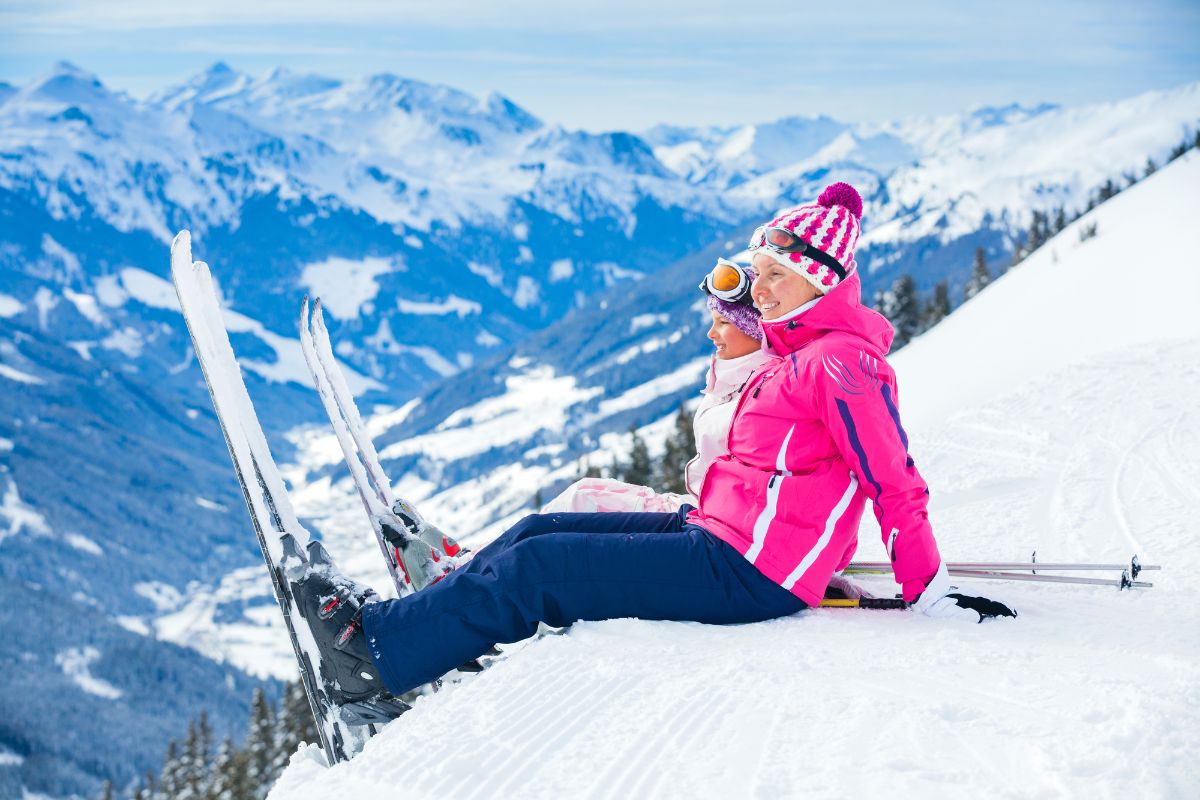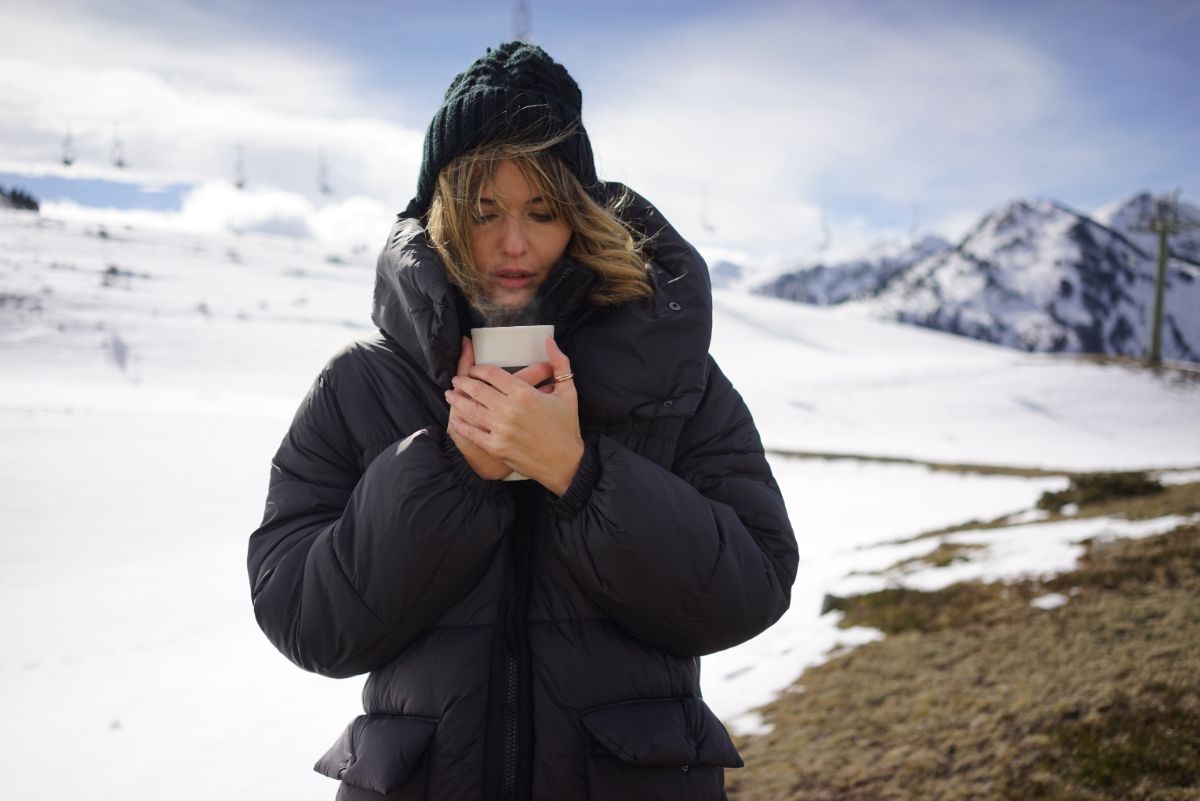
It is imperative when you are skiing or snowboarding for you to remain dry. The way you do this is to wear appropriate clothing and a jacket that provides adequate insulation and warmth. That jacket is called a down or “puffer” jacket.
Wearing a puffer jacket is the ideal way to ensure your body stays insulated and dry. Although a puffer jacket provides warmth and dryness while skiing, they do not offer the same flexibility, breathability, and waterproofing an actual ski jacket does.
Unfortunately, ski jackets are more costly than a puffer jacket. Therefore, if you are looking for a way to stay warm and dry, the next best option is a puffer jacket.
A Little History About the Puffer Jacket
Some people call it a quilted jacket. This is due to the way in which they are sewn together, giving them that familiar quilted, “puffy” look. Puffer jackets are filled with either synthetic fibers or down feathers as a form of insulation.
Depending on the synthetic fiber quality and how well they were constructed, both are excellent sources of warmth. Besides providing warmth, puffer jackets are incredibly lightweight.
However, keep in mind, jackets with down filling are slightly heavier. In comparison to leather or wool jackets, a puffer jacket provides both lightweightedness and warmth-a unique combination.
What is the Difference Between a Down Jacket and a Puffer Jacket?
A down jacket is a man-made jacket, constructed of packed inner and outer layers of down. Now you might be asking, ‘what is down?’ The answer is that down is the feathers from geese and ducks, one of the best insulators in nature.
Down jackets are made from filaments of down feathers. These filaments form a barrier that warm air gets trapped into, locking the body’s heat inside. The weight and strength of insulation is dependent on how thick the down has been packed into the jacket.
The puffer jacket is similar to a down jacket, only instead of feather it has synthetic layers.
The synthetic fibers are placed in inner and outer layers of the jacket. These layers are sewn in sections to form panels, giving it the appearance of puffiness. How thick the jacket is depends on its insulation and style, which in some cases can make maneuverability difficult.
Is a puffer Jacket Good for Skiing?

Wearing a puffer jacket in sub-zero weather conditions promises to keep you warm. However, when skiing or snowboarding the jacket needs a shell that is waterproof to ensure your stay dry.
The pros of puffer jackets
- Puffer jackets are extremely warm
- Attractive
- Compressible, lightweight, and can be packed easily
The cons of wearing a puffer jacket while skiing
- Typical puffer jacket brands lack waterproofing; resulting in the insulation material to become heavy and wet rapidly when in snowy or rainy weather.
- It takes a long time for these jackets to completely dry out once they become wet.
- When exerting physical energy while wearing a puffer jacket the extreme warmth can cause you to sweat.
- Sweating inside a jacket that lacks breathability or the technology of sweat-wicking can actually result in you getting cold and wet.
- Because the fabric and zip joins are not sealed or taped at the seam, moisture and cold air get inside the jacket. This results in your becoming damp. True gear made for snow is completely waterproofed which means all seams are sealed and covered with a waterproof tape.
- They lack a powder skirt. What is a powder skirt? It is the lining located inside at the bottom of a snow jacket and behaves as a deterrent to not allowing any snow and cold air inside. A powder skirt is especially useful in the event you should fall or slide on your back in the snow. The powder skirt keeps snow from getting inside and going up your back under the jacket.
Is a Puffer Jacket Warmer than a Ski Jacket?
Although ski jackets are waterproof and considered more effective when skiing, a puffer jacket is actually warmer. The reason is because the down/synthetic filling forms a space of air that lies between the elements and your body.
This air space is able to control the levels of warmth the jacket provides. In order to maintain the warmth of your body when active is to layer the clothing you wear.
What is a Ski Jacket?

A ski jacket is the most optimum type of jacket to wear when skiing. This is because a ski jacket is designed with the skier and winter weather conditions in mind. It allows maximum mobility, is resistant to climate conditions, and has breathability.
Many ski jackets are also made for wearing during other less active events. They provide the wearer with a sufficient amount of warmth, comfort, and dryness.
What is the Best Jacket to Wear when Skiing?
When planning a ski trip, the best jacket is one that is well-insulated, water resistant, and has plenty of pockets. If you are an experienced skier, then that jacket can be a fluffer jacket.
Otherwise, you should bring a rain jacket that is breathable and waterproof in case you should fall and get the jacket wet.
What Should You Wear When Skiing?

So, you are planning a ski trip and not sure what you should bring with you? We have compiled a quick checklist of important items you must bring with you to ensure a good time.
- A ski jacket (or puffer jacket if experienced)
- Some socks made for skiing
- A pair of long underwear
- Wool or fleece top
- Goggles or UV resistant sunglasses
- Mittens or gloves
- A helmet
- Pair of bibs or ski pants
- A balaclava or neck gaiter
The jacket you wear when skiing needs to be water resistant or waterproof. It should also have several pockets for carrying your keys, wallet, sunblock, and any other essential personal items. Your jacket should also be well insulated and allow maximum mobility.
Experienced skiers can wear a puffer jacket when skiing, as they meet all the above requirements. Otherwise, inexperienced skiers should wear a waterproof rain jacket over a wool or fleece top.
Reason Why You Shouldn’t Ski in a Puffer Jacket

Although you love your new puffer jacket, it is so comfortable–and warm! However, it is not a good idea to wear it while performing winter activities or sports.
The primary reason is a puffer jacket is not very durable. If you should ski up against a tree branch, or slip near or on a rock, your jacket might rip.
Secondly, the most important reason is the possibility of it becoming wet. When puffer jackets are wet they are no longer capable of maintaining warmth and insulating the body. They also take a very long time to dry completely.
This could pose a potentially dangerous situation should you fall in the snow and your jacket gets wet. If you are far from shelter you run the risk of frostbite or hypothermia.
It Keeps You Warm
As long as you don’t get it wet, a puffer jacket will keep you warm while skiing. In addition, if after hitting the slopes you want to do some sightseeing in the snow, it will keep you toasty warm.
However, if it’s an entire day, week, or the weekend you plan to go skiing then you better pack a jacket that is quick drying, breathable, durable, and waterproof. Therefore, you won’t be stuck with a puffer jacket that has been soaked during a sudden storm.

